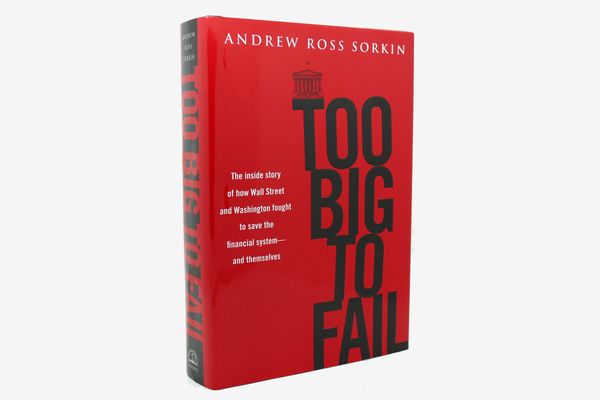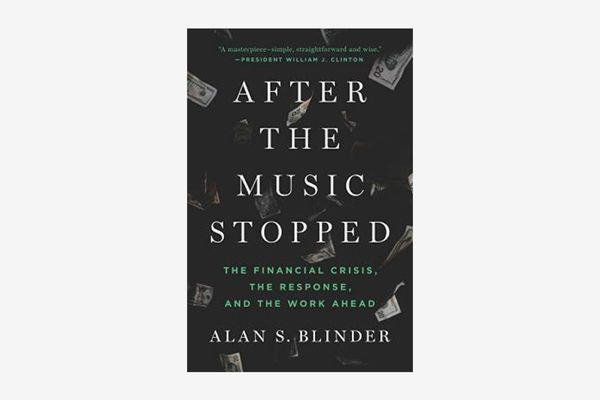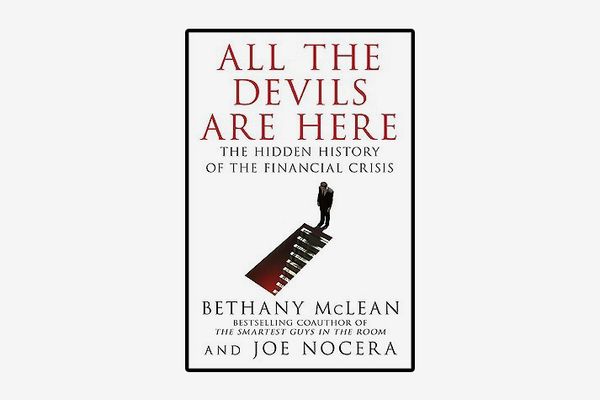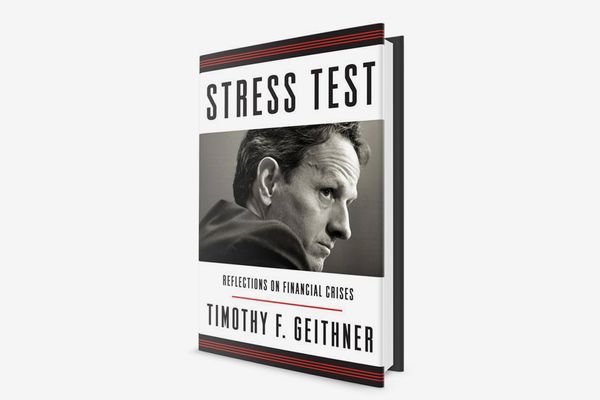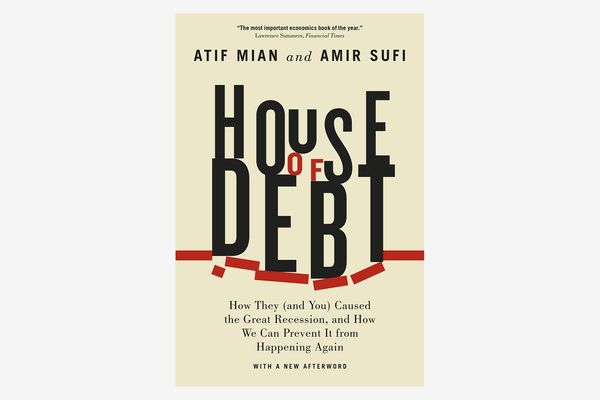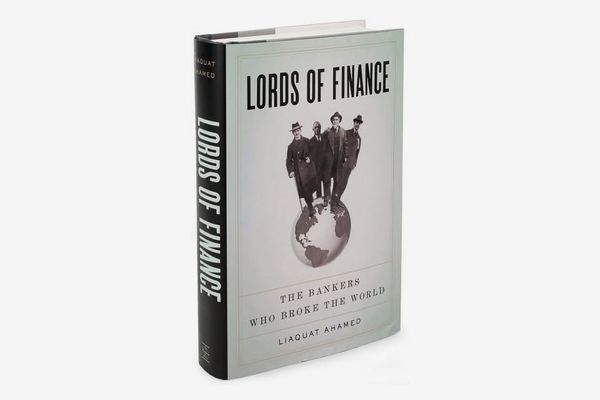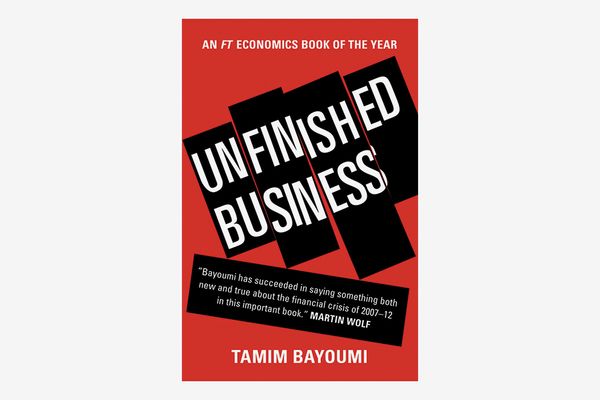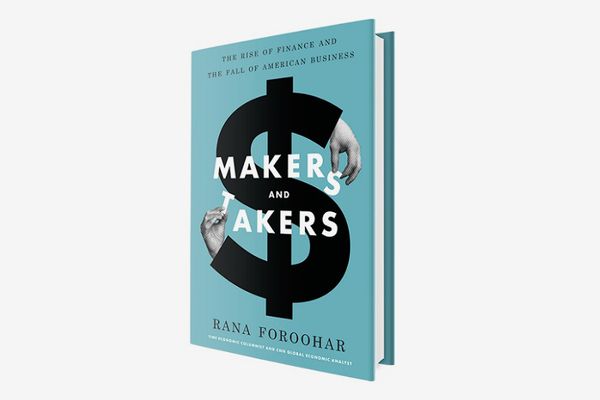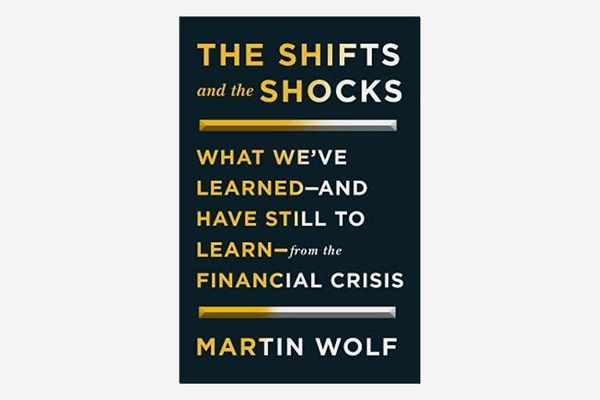
Welcome to Reading Lists, comprehensive book guides from the Strategist designed to make you an expert (or at least a fascinating dinner-party companion) in hyperspecific or newsworthy topics. This week: a selection of books about the financial crash.
The financial crisis of 2008 was the most important single economic event since the 1930s — and it was also the subject of last week’s print issue of our magazine, which chronicles the ascent of the New New Left and Donald Trump, as well as the demise of the middle class, pop culture, and the American Dream. You can read Frank Rich’s take on how the markets collapsing led to our current political state (Steve Bannon’s, too), as well as ruminations on the end of trust and pop culture.
For those who want to keep reading beyond that, the books already mount up. To build out an essential reading list, we consulted a group of economists and authors who’ve spent the past decade analyzing the crash. Our eight sources are Joseph E. Stiglitz, Nobel laureate in economics and former head of the Council of Economic Advisers; Martin Wolf, chief economics commentator for the Financial Times; Kenneth Rogoff, professor of public policy and economics at Harvard University and co-author of This Time Is Different: Eight Centuries of Financial Folly; Greg Ip, chief economics commentator for The Wall Street Journal; Nouriel Roubini, professor of economics at New York University Stern School of Business; Adam Tooze, author of Crashed: How a Decade of Financial Crises Changed the World; Niall Ferguson, senior fellow at Stanford’s Hoover institution; and Charles Ferguson, writer-director of the documentary Inside Job.
The commentariat sent us a list of books, from their favorite memoirs to their favorite new theories of finance, economics, and human behavior that have emerged since 2008. The nine titles listed below each earned two or more votes, and were recommended among almost 100 recommendations.
Best first draft of history
A majority of the experts I spoke with said that for a dramatic, readable account of why the crisis happened and how it was dealt with, check out Too Big to Fail by New York Times business reporter and columnist Andrew Ross Sorkin. Through unprecedented access to key Wall Street protagonists, Sorkin tells a blow-by-blow story of the events of the crisis when Lehman Brothers crashed. “This is a vivid portrayal of how policy-makers faced the most difficult decisions at the time of the crisis,” says Rogoff. Niall Ferguson adds, “It’s not only highly readable — it’s full of the kind of candid testimony that I suspect would otherwise not have been preserved.”
Best primer on the financial crash
This chronological narrative packs a comprehensive overview to the key events, people, and themes into a fast 400 pages: How did we ever get into such a mess? What was done to mitigate the problems of the financial crisis and why? Alan Blinder arbitrates these critical — yet contentious — questions in this book, which “provides the best feeling for the particularly bad behaviors of the banks,” says Stiglitz. Tooze adds: “This book remains the classic account of the crisis in the U.S. and the policy response. Lucid, tough-minded, and written with real verve.”
Best portrait of Wall Street plutocrats
Angelo Mozilo, former CEO of Countrywide, and Roland Arnall, owner of Ameriquest, are but a few of the hundred-plus devils to feature in this book, written by Bloomberg columnist Joe Nocera and Vanity Fair contributing editor Bethany McLean. By spotlighting the personalities of key players, this book succeeds in synthesizing the complex interrelationships of Wall Street, Main Street, the Fed, and the Treasury Department, which came to a head in 2008.
Best memoir
Books written by leading actors of the 2008 financial crisis are generally seen as unpersuasive, seeing that they unavoidably offer a self-serving point of view. Still, Tim Geithner, who served as Treasury secretary before, during, and after the crisis, manages to narrate his experiences from inside the D.C.-NYC loop with “brutal” candidness about the failing of everyone involved — including himself. “For my money, this is the best first-person account, thanks to Geithner’s clear-eyed and instinctive grasp of the forces at work and the personalities involved,” says Ip. “Geithner deals only superficially with the underlying economics, but no one knows his way through the maelstrom better.”
Best explainer on debt
If you have ever wondered why household debt features so prominently in debates on the causes of the 2008 crash and how to bubble-proof the economy from the next crisis, then read this book by economists Atif Mian and Amir Sufi. This account of how household leverage operated to drive the financial crisis, while “clear and accessible,” also delivers analytic rigor that gets at the structural forces behind the recession. Their conclusion is thus: The cause of real economic hardship was consumers’ inability to cope with their household debts, not the financial panic that brought down Lehman. “This book shows how the states hardest hit by the subprime crisis also had by far the worst recessions,” says Rogoff. “They, I believe correctly, stress that by far the most effective policy would have been to find a way to bail out low-income mortgage holders.”
Best for historical context
“It’s financial history at its best,” says Ip of this Pulitzer Prize–winning book, which reminded the WSJ journalist during his reporting on the 2008 crisis of the time and critical distance it would take to fully comprehend its causes and consequences. Liaquat Ahamed’s story begins almost 80 years before Lehman Brothers collapsed and the world teetered on the brink of a second great depression, and then proceeds to chronicle how central bankers and their adherence to the gold standard precipitated the Great Depression. “Central bankers of that day were far more subordinate to their finance ministries (Treasuries) than they are today,” says Rogoff. “But it is nevertheless a marvelous written narrative of how central bankers were deer caught in the headlights.”
Best for global context
It’s worth repeating that when Lehman Brothers, a medium-size U.S. bank, toppled, it brought down the entire North Atlantic region into deep recession, and the eurozone into depression. This was truly a “North Atlantic Financial Crisis,” says Wolf in respect to Tamim Bayoumi’s account of the close links between the European and U.S. banking systems.
Best critique of the financial sector
In this volume, the financial crisis in 2008 is but a symptom of the underlying economic illness called “Financialization,” which besets America, the richest and largest market-orientated country in the world where just 19 percent of young people identify as capitalists. “Foroohar’s book gives you a flavor of the bad behavior intrinsic to the financial sector,” says Stiglitz. “It’s good if you want to understand a critique of what was going on inside the heads of protagonists during the financial crisis.”
If you only read one book
You should come to this book already familiar with key aspects of the great financial crisis: the housing bubble together with the peddling of subprime mortgages to vulnerable householders, the triumph of free-market ideology followed by deregulation, and so on. Wolf’s distinct contribution is to show the analytical link between global macroeconomic developments, especially the rise of China and the emerging global savings glut, with the fragility of the financial systems. “You have rather to be a bit Marxist to understand the crisis to get the big structural forces behind it rather than the role played by specific Great or Evil Men, which are emphasized in popular books about the financial crisis,” said Roubini. “Martin Wolf’s book has economic analysis and rigor; he sees the forest for the trees.”
The Strategist is designed to surface the most useful, expert recommendations for things to buy across the vast e-commerce landscape. Some of our latest conquests include the best acne treatments, rolling luggage, pillows for side sleepers, natural anxiety remedies, and bath towels. We update links when possible, but note that deals can expire and all prices are subject to change.
Every editorial product is independently selected. If you buy something through our links, New York may earn an affiliate commission.


